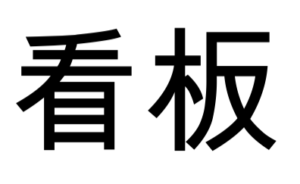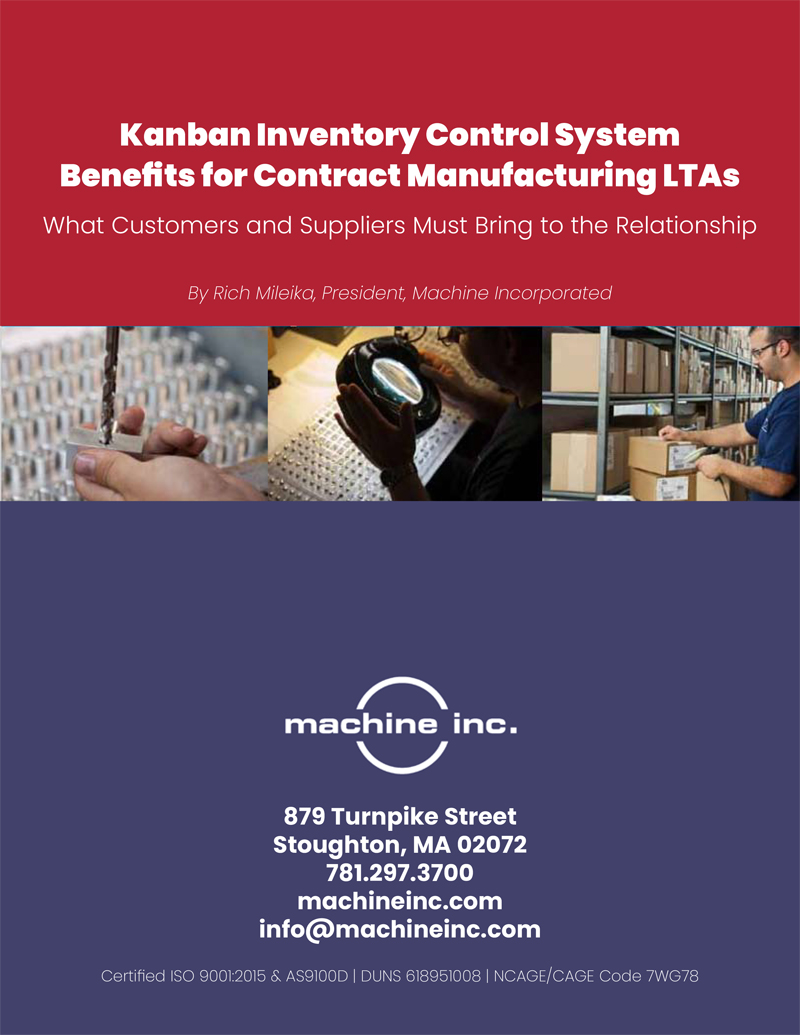Kanban
Machine Incorporated has embraced the implementation of Kanban systems for our customers.
Kanban is a Japanese term meaning “signal.” The term is widely used today worldwide to denote a form of replenishment signal used to transmit information generally regarding the movement or production of products.

A Kanban system can signal the authorization to move material or product from the supplying location to the consuming location. They can also be used to signal the authorization to produce additional product.
What are the main benefits of a Kanban system?
One big benefit of a Kanban system is that it puts limits on inventory build-up. A Kanban acts as a limit. When the Kanban is full, no additional product can be made, or moved, into that location. Putting limits on inventory has some very big benefits: less cash is tied up, less space, less handling, less handling damage, etc. Reductions of work-in-process (WIP) inventory have the additional benefits of reducing your products’ lead-time (think of items in WIP as standing in line, waiting their turn for processing. The longer the line, i.e. the more WIP, the longer they’ll have to wait.)
Inventory limits means less cash is tied up, less space, less handling, less handling damage.
Less inventory also reduces the amount of scrap or rework required when a defect is discovered. And, since less inventory means shorter lead times, a Kanban control system shortens the time between creation of a defect and its discovery, thereby improving the chances of correctly diagnosing its cause.
For repetitive items, a Kanban system can also reduce the reliance on forecasts. However, in this person’s opinion, one of the most powerful aspects of Kanbans is the ease that they provide for forcing continuous improvement, at the grass roots shop floor level of the organization.
Inventory reduction exposes problems and forces solutions to those problems. A Kanban system provides a simple visible mechanism for shop-floor people to translate top-level management objectives into concrete actions, e.g. “Cut the size of the Kanban between operation 1 and operation 2 by 70% in the next 6 weeks.”
Is Kanban the same as “pull”?
Pull can be used to define a philosophy: “Make or move an item only when needed,” or a formal “pull system” which will typically utilize Kanbans as the signaling device. In a pull environment, each operation required to produce a product is considered to be the customer of the preceding operation. The Kanban, or pull signal, is treated like the customer order. In a pull system environment, items are not processed without a “customer order,” i.e. a pull signal. Items are therefore made and/or moved “just in time.”
Is a Kanban System the same as a Lean Manufacturing System?
No. “Lean” defines an operating philosophy. While there are a whole set of techniques and related disciplines, the general concept of “Lean Manufacturing” is that of continuous product flow, without interruption, through the entire value stream. Inventory is seen as an equivalent to cycle time (the more inventory, the longer any one item must wait for “its turn”). An underlying philosophy is that the reduction of cycle times and inventories will force waste to be exposed, and create the urgency for its elimination (as depicted in the classical “water and rocks” analogy).
Waste is re-defined as “anything that does not add value from the customer’s perspective.” A Kanban system, on the other hand, defines a powerful technique that is often used in lean enterprises. A Kanban is basically a signaling device, used to control when and how much of an item is made or moved.

